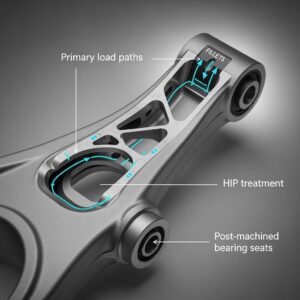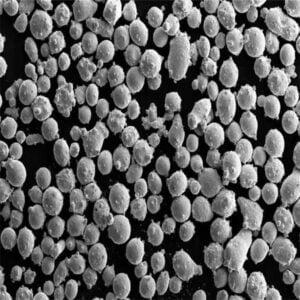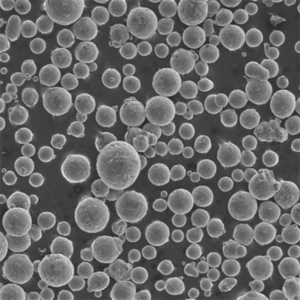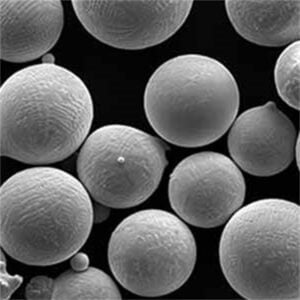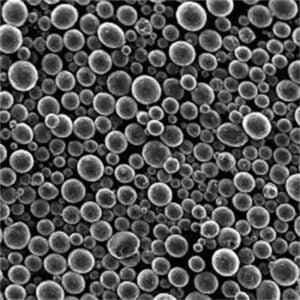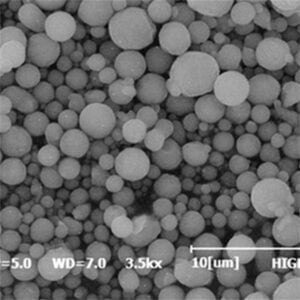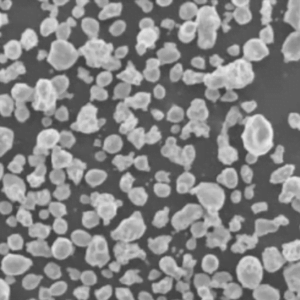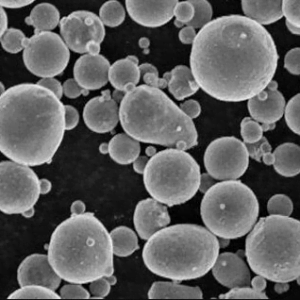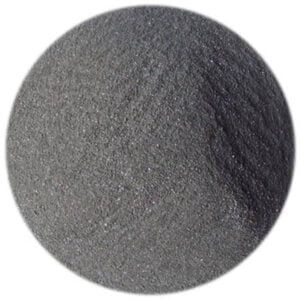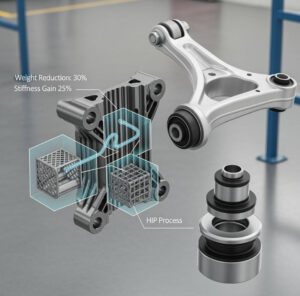2024년 스테인리스 스틸 17-4PH 파우더
목차
개요
스테인리스강 17-4PH 분말은 금속 3D 프린팅에 사용할 수 있는 침전 경화 마르텐사이트계 스테인리스강입니다. 강도와 경도가 높고 내식성이 우수합니다. 17-4PH에는 약 4%의 구리가 함유되어 있어 구리가 풍부한 입자의 침전을 통해 합금의 시효 경화를 가능하게 합니다.
이 문서에서는 17-4PH 분말의 구성, 특성, 가공, 용도, 공급업체, 다른 합금과의 비교 등 17-4PH 분말에 대한 개요를 제공합니다. 주요 세부 사항은 아래 표에 요약되어 있습니다.
17-4PH 파우더 구성
17-4PH는 약 4% 구리를 포함하는 성분에서 그 이름을 따왔습니다. 주요 합금 원소는 다음과 같습니다:
| 요소 | 무게 % |
|---|---|
| 크롬 | 15 – 17.5% |
| 니켈 | 3 – 5% |
| 구리 | 3 – 5% |
| 망간 | ≤ 1% |
| 실리콘 | ≤ 1% |
| 탄소 | ≤ 0.07% |
| 유황 및 인 | ≤ 0.04% |
| 질소 | ≤ 0.03% |
구리 성분은 침전물 경화를 일으켜 17-4PH의 강도와 경도를 크게 증가시킵니다. 크롬은 내식성을 제공합니다. 니켈 또한 내식성을 높이는 동시에 연성과 인성을 향상시킵니다.
17-4PH 파우더 속성
17-4PH 파우더는 고강도와 우수한 내식성의 탁월한 조합을 제공합니다. 주요 특성은 다음과 같습니다:
| 속성 | 설명 |
|---|---|
| 힘 | 인장 강도 최대 1,380MPa, 항복 강도 최대 1,240MPa |
| 경도 | 노화 후 최대 44 HRC |
| 내식성 | 구리로 인해 400 시리즈 스테인리스강보다 우수합니다. |
| 가공성 | 강도가 높아 300 시리즈보다 기계 가공이 더 어렵습니다. |
| 자성 | 마르텐사이트 미세 구조로 인해 약간의 자성이 있습니다. |
| 용접성 | 침전물 경화로 인해 300 시리즈보다 용접성이 낮음 |
열처리를 통해 강도, 경도 및 내식성을 조정할 수 있습니다. 용액 어닐링은 합금을 부드럽고 연성화합니다. 이후 노화는 구리가 풍부한 입자의 침전을 유도하여 전위 이동을 방해함으로써 소재를 경화 및 강화합니다.
17-4PH 처리
17-4PH 파우더는 여러 금속 3D 프린팅 방법을 통해 가공할 수 있습니다:
- 레이저 파우더 베드 퓨전(L-PBF)
- 전자빔 파우더 베드 융합(E-PBF)
- 직접 에너지 증착(DED)
L-PBF는 가장 일반적인 접근 방식 중 하나입니다. 조밀하고 균열이 없는 부품을 만들고 잔류 응력을 방지하려면 공정 파라미터를 신중하게 제어해야 합니다.
L-PBF에서 17-4PH 분말의 일반적인 처리 조건:
- 층 두께: 20-50 μm
- 레이저 출력: 100-400W
- 스캔 속도: 100-1500 mm/s
- 해치 간격: 80-120 μm
- 빔 직경: 50-100 μm
인쇄 후 잔류 응력을 완화하기 위해 응력 완화 열처리를 권장합니다. 프린트된 부품은 용액 어닐링 및 에이징을 통해 경도와 강도를 높일 수 있습니다.
17-4PH 애플리케이션
17-4PH는 다양한 산업 분야에서 고강도, 경도 및 중간 정도의 내식성이 요구되는 금속 3D 프린팅 부품에 사용됩니다:
- 항공우주: 터빈 블레이드, 임펠러, 패스너, 브래킷
- 자동차 변속기 부품, 터보차저 부품
- 석유 및 가스: 밸브, 유정 부품, 펌프
- 일반 엔지니어링: 툴링, 픽스처, 금형
노화 후 경도가 높기 때문에 17-4PH는 내마모성 응용 분야에 적합합니다. 사출 금형 및 금형용 공구강과 같이 가공하기 어려운 소재를 대체할 수 있습니다. 이 합금은 일반적으로 고강도 구조용 브래킷 및 하우징에 사용됩니다.
17-4PH 분말 공급업체
17-4PH 파우더는 주요 금속 파우더 제조업체에서 시판하고 있습니다:
| 공급업체 | 제품 등급 | 크기 범위 |
|---|---|---|
| 샌드빅 | 오스프리 17-4PH | 15-45 μm |
| 목수 | 17-4PH | 15-45 μm |
| 프렉스에어 | 17-4 PH | 15-53 μm |
| LPW 기술 | 17-4PH | 15-45 μm |
| 에라스틸 | 17-4 PH | 20-150 μm |
가격은 주문 수량에 따라 $50/파운드에서 $90/파운드까지 다양합니다. 맞춤형 입자 크기 분포와 고순도 등급(예: 인산염 부동태화)을 사용할 수 있습니다.
17-4PH 대 기타 합금
17-4PH는 스테인리스강 및 공구강 합금과 다음과 같이 비교됩니다:
| 합금 | 힘 | 내식성 | 댓글 |
|---|---|---|---|
| 17-4PH | 매우 높음 | 보통 | 강수량 경화, 높은 경도, 우수한 강도 및 내식성의 조합 |
| 316L | Medium | 우수 | 표준 내식성 스테인리스, 낮은 강도, 열처리 불가, 저렴함 |
| PH 13-8 | 높음 | 우수 | 강수량 경화, 고강도 및 내식성, 8% 니켈 함유. |
| H13 공구강 | 매우 높음 | 보통 | 표준 공구강, 경도는 높지만 내식성이 낮고 가격이 더 비쌉니다. |
자주 묻는 질문
17-4PH 스테인리스 스틸의 주요 장점은 무엇인가요?
17-4PH의 주요 장점은 높은 강도와 경도에 적당한 내식성을 더한 것입니다. 에이징을 통해 최대 44 HRC의 경도 값을 얻을 수 있습니다. 300 시리즈 스테인리스강보다 훨씬 높은 강도를 제공합니다.
17-4PH 스테인리스 스틸은 어떤 용도로 사용되나요?
17-4PH의 일반적인 응용 분야에는 브래킷 및 하우징, 내마모성 부품, 플라스틱 사출 금형 및 다이, 임펠러, 밸브, 항공우주 부품과 같은 구조 부품이 포함됩니다. 항공우주, 석유 및 가스, 자동차, 일반 엔지니어링 분야에서 널리 사용됩니다.
17-4PH가 금속 3D 프린팅에 적합한 이유는 무엇인가요?
17-4PH는 열전도율과 열팽창 계수가 낮아 인쇄 시 잔류 응력과 균열이 잘 생기지 않습니다. 경도가 높아 내마모성 툴링의 프린팅이 가능합니다. 이 합금은 일반적으로 분말 형태로 제공됩니다.
17-4PH에는 어떤 열처리가 사용되나요?
17-4PH는 일반적으로 1038~1066°C에서 용액 어닐링한 후 371~427°C에서 노화시켜 구리가 풍부한 입자를 침전시킵니다. 이렇게 하면 합금이 경화되고 상당히 강화됩니다. 열처리 전에 응력을 완화하는 것이 좋습니다.
17-4PH는 316L 및 H13 공구강과 어떻게 다릅니까?
17-4PH는 316L 스테인리스강보다 강도와 경도가 훨씬 높지만 내식성은 낮습니다. H13 공구강에 비해 17-4PH는 경도는 약간 낮지만 내식성이 더 우수합니다. 17-4PH는 경도, 강도, 내식성 사이의 균형이 잘 잡혀 있습니다.
17-4PH를 3D 프린팅할 때 어떤 주의 사항이 필요합니까?
잔류 응력과 균열을 최소화하려면 신중한 공정 파라미터 선택과 레이어 간 응력 완화가 중요합니다. 인쇄 방향, 지지 구조, 해상도/레이어 높이도 복잡한 형상에 맞게 최적화해야 합니다.
17-4PH 파우더를 제공하는 공급업체는 어디인가요?
17-4PH 파우더의 주요 공급업체로는 Sandvik, Carpenter Additive, Praxair, LPW Technology 및 Erasteel이 있습니다. 파우더는 DED 및 L-PBF와 같은 AM 공정에 맞게 다양한 크기 분포로 제공됩니다.
자주 묻는 질문(FAQ)
1) What powder specs matter most for Stainless Steel 17-4PH Powder in LPBF?
- Spherical 15–45 µm PSD, low satellites, O ≤0.05–0.10 wt%, N ≤0.03 wt%, H ≤0.005 wt%, Hall/Carney flow within spec, and consistent apparent/tap density for stable spreadability and high relative density.
2) Which heat-treatment condition is best for AM 17-4PH: H900, H1025, or H1150?
- H900 maximizes strength/hardness but reduces toughness; H1025 balances strength and toughness for general structural parts; H1150/H1150M improves toughness and stress-corrosion cracking resistance for pressure-retaining or vibration-loaded parts.
3) Do LPBF parts require HIP for 17-4PH?
- HIP is recommended for fatigue/leak-critical parts to close internal porosity and improve fatigue life; many non-critical brackets achieve ≥99.5% density as-built without HIP using tuned parameters.
4) How does powder reuse affect properties?
- Reuse can increase O/N pickup and PSD drift, impacting density and ductility. Implement sieving, O/N/H monitoring, exposure time logs, and blend with virgin powder (e.g., 20–30%) to maintain specification and consistency.
5) Are AM 17-4PH properties comparable to wrought?
- Yes, with qualified parameters and proper heat treatment. Post-H900/H1025 conditions typically meet or exceed wrought-strength levels; verify through tensile, hardness, impact, and corrosion testing per applicable specs.
2025 Industry Trends
- Parameter sets by OEMs: Wider availability of validated LPBF build recipes for 17-4PH targeting near-zero lack-of-fusion with improved contour/remelt strategies and optimized gas flow.
- Low-N variants: Increased supply of Nb-stabilized/low-nitrogen powder cuts to reduce δ-ferrite and improve toughness post-aging.
- Sustainability and circularity: Powder take-back/reconditioning with certified O/N/H restoration; argon recirculation and closed-loop powder handling.
- Binder jetting maturation: Finer cuts (5–25 µm) with tailored debind/sinter schedules deliver 96–98% density as-sintered; HIP for pressure service.
- Data-rich CoAs: Standard inclusion of PSD raw data, O/N/H trends, SEM morphology, and exposure-time logs to accelerate PPAP/FAI.
2025 Snapshot: Stainless Steel 17-4PH Powder KPIs
| Metric (2025e) | Typical Value/Range | Notes/Source |
|---|---|---|
| LPBF PSD | D10 15–20 µm; D50 25–35 µm; D90 40–50 µm | ISO/ASTM 52907 context |
| Interstitials (AM-grade) | O ≤0.05–0.10 wt%; N ≤0.03 wt%; H ≤0.005 wt% | Supplier CoAs |
| As-built relative density | ≥99.5% with tuned parameters | CT verification |
| Post-HIP density | ≥99.9% | Leak-/fatigue-critical |
| Typical UTS (H900) | ~1,100–1,300 MPa | Spec- and process-dependent |
| Typical UTS (H1025) | ~1,000–1,150 MPa | 더 높은 인성 |
| Price band (powder) | ~$25–$60/kg (region/volume/spec) | Market quotes 2024–2025 |
| 리드 타임 | 3–7 weeks stocked; 8–12 weeks MTO | Supplier disclosures |
Authoritative sources:
- ISO/ASTM 52907; ASTM F3049 (powder characterization): https://www.astm.org, https://www.iso.org
- ASTM A564/A693 (17-4PH bars/plates), AMS 5643/5604 (17-4PH), SAE/AMS heat-treatment callouts
- ASM Handbook Vol. 7 (Powder Metallurgy), Vol. 4 (Heat Treating): https://www.asminternational.org
- AMPP/NACE corrosion resources: https://www.ampp.org
Latest Research Cases
Case Study 1: LPBF 17-4PH H1025 Brackets for Offshore Wind (2025)
- Background: An offshore OEM needed corrosion-resistant, high-strength brackets with reduced lead time and consistent fatigue performance in a marine environment.
- Solution: Adopted AM-grade Stainless Steel 17-4PH Powder (D50 ~32 µm, O 0.06 wt%); tuned contour+remelt strategy; stress relief → HIP → H1025; passivated per ASTM A967.
- Results: Relative density ≥99.9% post-HIP; UTS 1,090 MPa, elongation 12%; salt-spray performance on par with wrought; fatigue life at R=0.1 improved 20% vs. as-built + H1025 without HIP; lead time −35%.
Case Study 2: Binder-Jetted 17-4PH Tooling Inserts with Conformal Cooling (2024/2025)
- Background: A molding supplier sought cycle-time reduction and wear resistance without expensive H13.
- Solution: Used 5–20 µm powder; solvent debind + high-purity H2/N2 sinter; selective HIP for high-pressure inserts; H900 aging; abrasive flow machining for channels.
- Results: As-sintered density 97–98%; HIPed parts ≥99.7%; cycle time −18% via conformal channels; wear rate −25% vs. conventional 420 stainless insert after 100k shots.
전문가 의견
- Dr. John A. Slotwinski, Additive Manufacturing Metrology Expert (former NIST)
- Viewpoint: “For 17-4PH, monitoring interstitials and PSD tails across reuse cycles is as vital as density measurements to ensure repeatable mechanical properties.”
- Prof. Tresa M. Pollock, Distinguished Professor of Materials, UC Santa Barbara
- Viewpoint: “HIP plus appropriate aging (H1025/H1150) offers a robust path to wrought-comparable fatigue performance while mitigating lack-of-fusion defects.”
- Dr. Christina Bertulli, Director of Materials Engineering, EOS
- Viewpoint: “Validated process maps and data-rich CoAs are shortening time-to-qualification for Stainless Steel 17-4PH Powder in energy and industrial sectors.”
Practical Tools/Resources
- Standards and specs: ISO/ASTM 52907; ASTM F3049; ASTM A564/A705; AMS 5643/5604 for property targets and heat-treatment guidance
- Corrosion testing: ASTM A967/A380 (passivation), ASTM G48 (pitting), ASTM B117 (salt spray) for comparative screening
- Metrology: Inert gas fusion (O/N/H), laser diffraction (PSD), SEM for morphology, CT for porosity, tensile per ASTM E8, hardness per ASTM E18
- Process control: Gas purity monitoring (O2 <100 ppm), contour+remelt scan strategies, powder reuse SOPs with exposure tracking and sieving, SPC on density/mechanicals
- Design/simulation: Ansys/Simufact Additive for distortion/supports; lattice and topology optimization for weight and cooling-channel design
Implementation tips:
- Choose heat-treatment condition to match performance needs: H900 for max strength; H1025 for balanced properties; H1150 for improved toughness/SCC resistance.
- Specify CoA with chemistry incl. interstitials, PSD (D10/D50/D90), SEM morphology, flow/tap/apparent density, moisture/LOD, and lot genealogy.
- Plan HIP for fatigue- or leak-critical parts; validate density with CT and confirm corrosion via passivation + targeted tests (G48/B117).
- Control powder reuse: set cycle limits, blend with virgin, and monitor O/N/H and PSD drift to maintain consistency.
Last updated: 2025-10-13
Changelog: Added focused 5-question FAQ, 2025 KPI table for AM-grade 17-4PH, two recent case studies (LPBF offshore brackets and binder-jetted tooling inserts), expert viewpoints, and practical tools/resources with implementation tips
Next review date & triggers: 2026-04-20 or earlier if ISO/ASTM/AMS standards update, supplier CoA practices change, or new data on HIP/aging effects and powder reuse for 17-4PH AM is published
공유
중국 칭다오에 본사를 둔 선도적인 적층 제조 솔루션 제공업체인 MET3DP Technology Co. 당사는 산업용 3D 프린팅 장비와 고성능 금속 분말을 전문으로 합니다.
관련 기사
